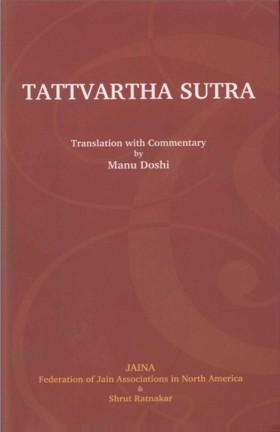07.14 Agāryanagārashcha
Audio: Sanskrit: अगार्यनगारश्च ।
Hindi: व्रती के अगारी (गृहस्थ) और अनगार (त्यागी) ये दो भेद है ।
07.15 Anuvrato'gārī
Audio: Sanskrit: अणुव्रतोSगारी।
Hindi: अणुव्रतधारी आगारी व्रती कहलाता है।
07.16 Digdeshānarthadandviratisāmāyikpaushadhopawāsopabhogparibhogparimānātīthisamvibhāgvratsam-pannashcha
Audio: Sanskrit: दिग्देशानर्थदण्डविरतिसामायिकपौ-षधोपवासोपभोगपरिभोगपरिमाणाs- तिथिसंविभागव्रतसंपनाश्च।
Hindi: वह व्रती(अणुव्रती) दिग व्रत, देशावकाशिक व्रत, अर्थदण्ड विरमण व्रत, सामयिक, पौषधोपवास व्रत,भोगोपभोग परिमाणा व्रत तथा अतिथि संविभाग व्रत से भी संपन्न होता है।
07.14-16
English: One, who observes restraint, can be a layman or a monk. One observing Anuvrats belongs to the lay cadre. They need to be associated with seven subsidiary restraints called Digvirati, Deshvirati, Anarthadandvirati, Sāmāyik, Paushadhopavās, Bhogopabhogparimān and Atithisamvibhāg, The restraints need to be observed by the monastic as well as lay people. Those in the lay cadre observe them in modified form, which are termed as Anuvrats (minor restraints). They need to be associated with following subsidiary restraints,
- Digvirati, which stipulates limiting the areas of operation in different directions,
- Deshvirati, which stipulates further restricting the areas of operation for a certain period,
- Anarthadandvirati, which stipulates averting the purposeless violence,
- Sāmāyik, which stipulates exercising of equanimity,
- Paushadhopavās, which stipulates practicing of the monastic code,
- Bhogopabhogparimān, which stipulates laying restrictions on the use and consumption of different articles and viī) Atithisamvibhāg, which stipulates serving the monks, nuns and others with the articles of use. Inclusive of the five minor restraints, there are thus twelve restraints for the laymen.
The order in which the subsidiary restraints are mentioned here is as per Digambar tradition. In Shwetāmbar tradition Bhogopabhogparimān is mentioned as second, in place of Deshvirati, while Deshvirati is put in the fifth place after Sāmāyik. There is significance behind that order. The seven subsidiary restraints can be divided into two categories. The first three are termed as auxiliary, while the remaining four are called disciplinary. The auxiliary restraints need to be observed for the entire life, while the disciplinary ones are to be practiced from time to time to a certain extent. Bhogopabhog-parimān falls in the former category, while Deshvirati belongs to the disciplinary category.
 Acharya Umaswati
Acharya Umaswati
